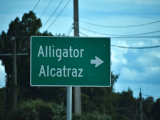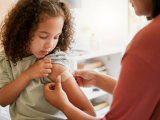Jun 1, 2010 (CIDRAP News) – Australia's chief medical officer today renewed his advice for clinicians to suspend seasonal flu vaccination for healthy children younger than 5 after national investigations confirmed higher-than-expected rates of fever and convulsions after immunization in that age-group.
In a statement today, Dr Jim Bishop said the reactions in younger children have been linked mainly to Fluvax, made by Australian producer CSL Ltd. Investigations by the country's drug regulator, its vaccine advisory group, and the National Center for Immunization Research and Surveillance found no clinical, biological, or epidemiologic factors that would explain the higher rates of fever with convulsion. The groups put the rate at 9 per 1,000 children vaccinated, versus an expected rate of less than 1 in 1,000.
Bishop's statement prompted an announcement from CSL today that it was pulling remaining doses of its vaccine from medical clinics and distributors and that it would alert doctors about Bishop's advice and the results so far of investigations into the increased rates of adverse events.
Though influenza itself can produce fever with convulsions, symptoms that mimic the reported vaccine effects, "there is a clear signal that the rate of fever with convulsions is higher with this year's vaccine across all jurisdictions," said Bishop.
When reports of fever and convulsion first surfaced in April, they were mainly concentrated in Western Australia, where children are eligible to receive free seasonal flu vaccination. Since then, further investigations have revealed similar findings across the country, Bishop said.
The CSL trivalent vaccine is an inactivated split-virus product that does not include an adjuvant. The pandemic H1N1 virus is one of the three flu strains covered by the vaccine.
Bishop said two other flu vaccines for children are used in Australia, Influvac, made by Solvay Biologicals, and Vaxigrip, made by Sanofi Pasteur, but too few doses of them have been administered to accurately determine if they are linked to similar rates of fever and convulsion.
Dr Darryl Maher, CSL's medical and research director, said today in a statement that the safety profile of CSL vaccines has been well established after 40 years of manufacturing and testing. "The reports we have seen this season in children under 5 are unexpected and not consistent with our experience using previous seasons’ vaccines," he said, adding that CSL will continue to work with authorities to find an explanation for the higher rates of fever and convulsion.
Bishop advised parents of young children with underlying medical conditions to talk to their doctors about weighing the risks and benefits of seasonal flu vaccination this year. He added that monovalent pandemic H1N1 vaccine is an option for both healthy children and those who have risk factors, because the adverse events are in line with expected rates.
Australian regulators will continue to work with overseas counterparts and the US Centers for Disease Control and Prevention to investigate possible reasons for the higher rates of adverse events in children, Bishop said.
See also:
Jun 1 Australia Department of Health and Aging press release
Jun 1 CSL press release
Apr 23 CIDRAP News story "Australia probes seasonal flu vaccine reactions in children"


















